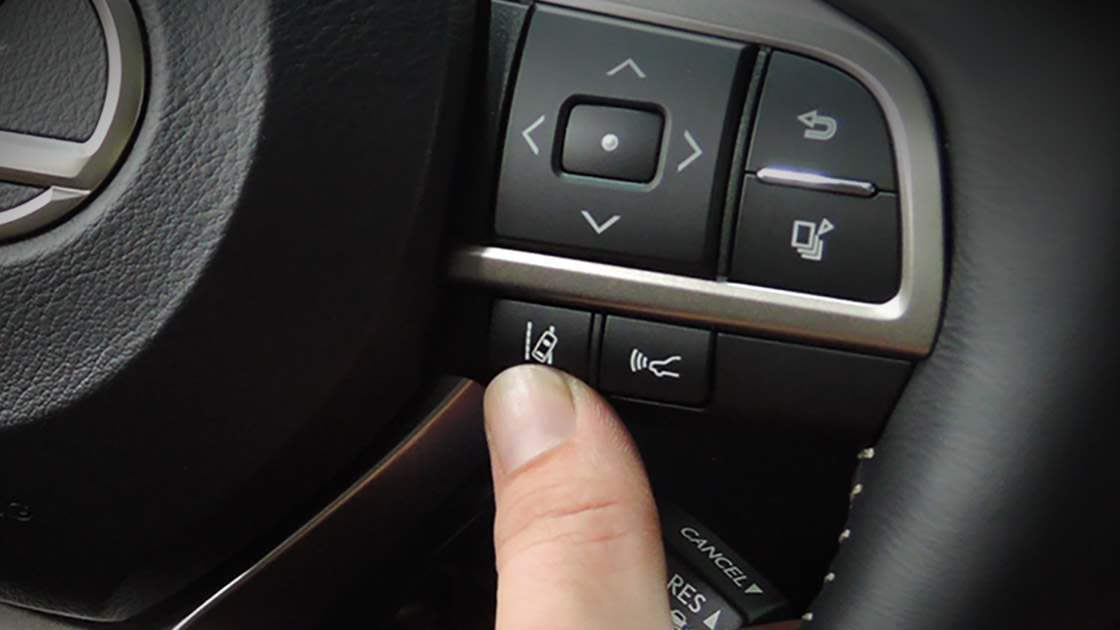Lane maintenance systems still a turnoff for many drivers
June 22, 2017

Among vehicles with crash avoidance features, lane maintenance systems are turned off nearly half the time, a new IIHS survey shows.
The study confirms previous findings that lane departure warning and lane-keeping support systems are one of the less popular types of crash avoidance technology. However, it also suggests ways of designing systems to make them more likely to be used.
Technology that helps drivers keep their vehicles within lane markings could potentially have a substantial effect on fatalities. An earlier IIHS study estimated that lane departure warning could be relevant to 23 percent of fatal crashes.
Unlike front crash prevention, lane maintenance systems haven't been shown to reduce insurance claims. One reason could be that claims are dominated by less serious crashes that can't be distinguished from those expected to be affected by lane departure systems. A forthcoming IIHS study using police-reported data finds lane maintenance systems are preventing more severe lane-drift crashes. It is also possible that effectiveness is being limited by low use rates. Many drivers shut off lane maintenance systems because they find them annoying. IIHS first looked at the operating status of crash avoidance features in an earlier study of Honda vehicles brought into dealerships for service. The researchers found that only one-third of vehicles had lane departure warning turned on, while all but one vehicle had forward collision warning turned on.
The new study also observed vehicles that were brought in for service but this time included models from nine manufacturers.
All the vehicles had some kind of lane maintenance system, a category that includes systems that issue warnings, systems that actively nudge a departing vehicle back into the lane with automatic steering or braking to prevent departures, and systems that do both. It also includes systems that provide continuous steering input to keep vehicles in the lane. In all cases, the systems maintained the on/off status from the previous trip, rather than defaulting back to on or off. Some of the vehicles also had front crash prevention or other crash avoidance systems, and the operating status of those systems was observed, too.
Of the 983 vehicles observed, 51 percent had their lane maintenance systems turned on. Among other types of crash avoidance systems, use rates were 90 percent or higher.
Results varied for lane maintenance features, depending on the characteristics of the system. Warning systems were more likely to be turned on if they had tactile warnings (54 percent) instead of auditory warnings (46 percent). Lane departure prevention systems, which guide the vehicle back into the lane when it begins to drift, also were more likely to be turned on than lane departure warning systems.
"Depending on the way you drive, lane departure alerts can go off fairly frequently in the course of regular driving even when there is no imminent danger," says Ian Reagan, an IIHS senior research scientist and the study's lead author. "Systems that beep seem to annoy people more than systems that warn the driver with vibrations of the seat or steering wheel."
Another important factor is how easy it is to turn off the system. Unlike front crash prevention, most of the lane maintenance systems studied could be deactivated with the push of a button. The Volvo XC90's active lane-keeping system had a much higher than average observed use rate of 86 percent. To turn the system off, drivers must navigate to a menu and go through several steps.
Reluctance to use lane maintenance systems is only one possible factor influencing the effectiveness of these systems. Another IIHS study found that incapacitation plays a role in one-third of lane-drift crashes. The finding raised questions about whether drivers would be able to adequately respond to lane departure alerts or retake control after an active system brings the vehicle back to the lane (see "Drivers who drift from lane and crash often dozing or ill," Sept. 1, 2016).